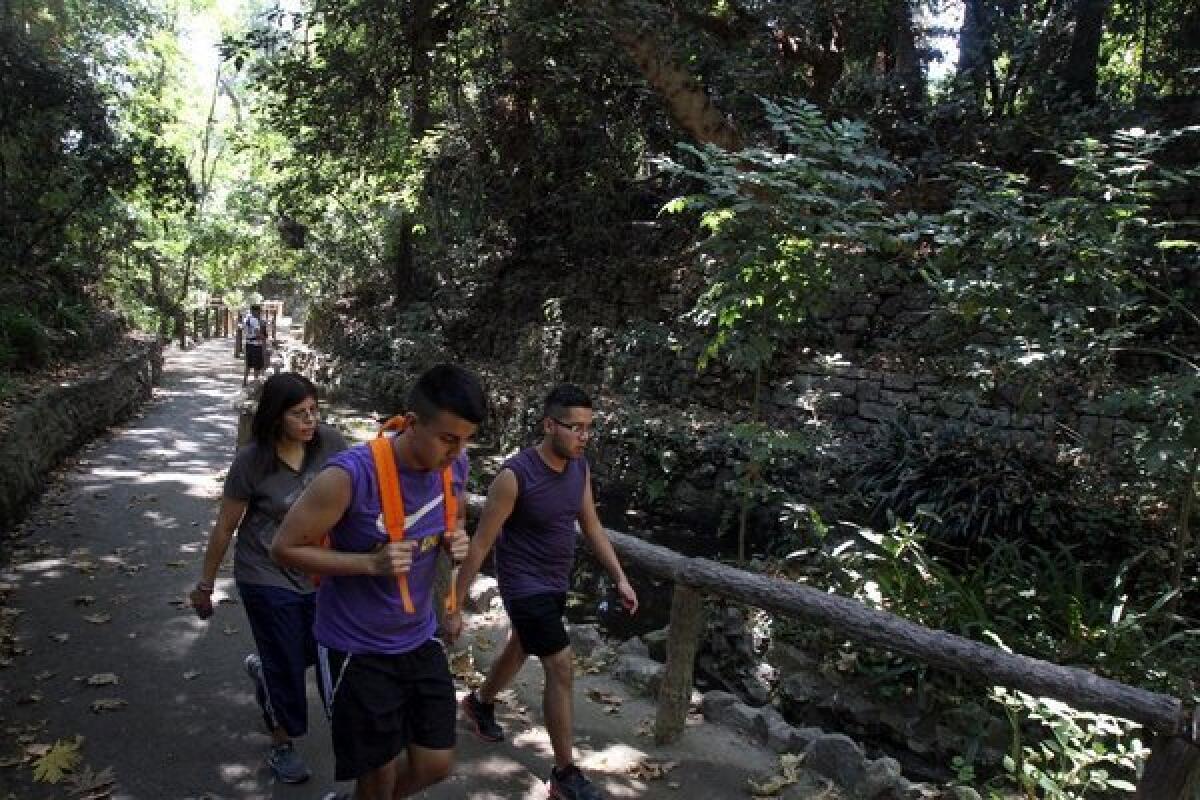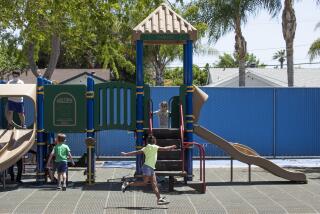Better park signs can spur more people to exercise, study says

- Share via
If a city wants healthier residents, it might consider new signs in its parks and other simple measures, according to a Rand Corp. study out Thursday that indicates it can be inexpensive to get people to be more active.
Given the widespread calls for Americans to exercise more, from the first lady to the corner gym, the researchers decided to see if they could increase use of and activity in local parks. They picked 50 parks in Los Angeles, gave some of them $4,000 apiece to spend in efforts to increase use of the parks, and then looked at what happened from 2007 to 2012
The study found that spending on marketing and outreach increased physical activity by 7% to 12%, compared with parks that did not make changes. The results were published in the American Journal of Preventive Medicine.
The ideas behind the study were straightforward: “Given that parks are intended to serve local communities, successfully addressing the underutilization of parks may require community input and participation,” the authors wrote.
The 50 parks were divided into three groups: In one, the park director worked with the researchers to try to get more people into the park and increase activity; in the second, the park director and a local park advisory board worked with the researchers; and in the third, the parks got no extra help.
The parks were chosen based on racial and and ethnic diversity in the one-mile radius around them. Researchers kept track of who used the park and how over the course of the day and early evening. The researchers also interviewed people who live near the park.
Most of the parks receiving money spent it in several ways, the researchers said, with about half of it going to signs to entice people to take part in activities. Twenty-eight percent of the money went to materials and labor for activities, and a fifth to incentives such as giveaways.
The parks that did nothing saw a slight decline in park use, according to the study, which showed little difference between the other two groups.
The researchers said most of the increased park usage was among people who already going to the parks, and they suggested that signs might be posted outside parks to attract new people.
It’s generally thought that individuals need to have the motivation for exercise, but “there is a large body of evidence indicating that environmental cues influence and change individual behavior, including physical activity,” the researchers wrote.
They noted that in Finland, an emphasis on local parks and sports facilities has increased physical activity; in the U.S., however, many cities, including Los Angeles, have cut park programs.
Indeed, during the study, all 50 parks had their budgets cut, which led to staff cuts and reduced hours.
Public health officials say a person should be active for at least 150 minutes a week, and that children should be active for at least an hour a day. Most people do not meet those guidelines.
mary.macvean@latimes.com







